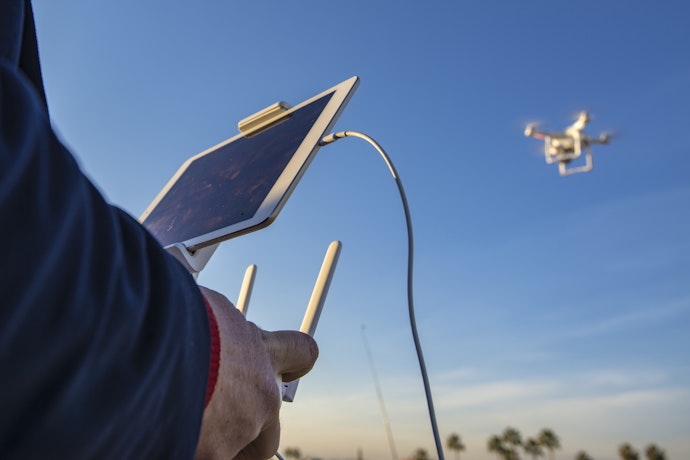How smart video fuels smart business
Learn how innovations in video powered by AI and machine learning are helping to reshape safety and efficiency for businesses.
Read more
For companies that operate fleets of trucks, small gains in efficiency translate to huge savings when scaled across an entire operation. UPS estimates that reducing distance driven by just one mile per truck per day could save companies with enormous fleets (eg, UPS, FedEx, the U.S. Postal Service) 50 million dollars over the course of a year. If you're a logistics manager looking to prepare your firm for the future of the industry, you are probably already researching drone fleet management technology. You also may be daunted by the regulatory challenges currently facing any last-mile drone delivery operation—the most commonly discussed use case in the trucking industry.
While this application shows promise, the U.S. just isn’t there yet, especially in urban environments where the laws regarding flying over non-participants and maintaining line-of-sight are challenging to work around.
Here’s the good news: There are already ways to incorporate drones into a fleet. As technology and regulations stand today, drones cannot completely disrupt your current way of doing business – rather, you can view drones as another tool to augment and improve your existing operations. By integrating drones into an existing fleet of equipment and vehicles, you can increase efficiency and overall safety.
It might seem counterintuitive, but many companies with fleets of trucks are already built to incorporate drones into their existing workflows and infrastructure. You already have a depot or office that can be used to store the equipment, mechanics that can perform basic maintenance, and the expertise to manage and deploy operators to suit your business's needs. You know how to operate in a highly regulated industry and foster a culture of accountability and respect for best practices.
You know your way around a checklist and how to keep detailed records. All of these are also requisites for running a commercial drone operation, so the foundation is already laid for an easy transition.
For starters, let's look at how drones can expand your data operations and help you gather insights that can help improve your operations and reduce waste. Odds are you’re already using an array of aftermarket hardware and high-powered fleet management software to gather and process information about your drivers and fleet, and drones are a means of adding inexpensive, reliable, high-quality aerial data to what you’re already collecting.. Here are a few use cases for drone aerial data and imaging, many of which have already seen success in the construction and engineering industries.
These use cases are just a few examples of how drones can be used today to make your operations more efficient. As regulations evolve and it becomes easier to use drones for last-mile deliveries, or to serve rural areas without sending a driver and truck on a low-density delivery run, the sky will truly be the limit for this technology to deliver freight. When that day comes, those companies that have already embraced drones will enjoy a considerable advantage over their competitors and find that scaling up is an easier when you already have laid the foundation for a well-run commercial drone operation.
Skyward, a Verizon company, helps companies launch and run safe, efficient drone operations. Like operating a fleet of vehicles, drones require logistical, safety, and regulatory oversight. Between dynamic airspace, evolving regulations, operator certifications, maintenance, and job specifications, there’s a lot to keep track of—more, if you operate in multiple jurisdictions. Skyward’s operations management platform gives businesses one place to manage it all.
Tags: Cost control, Data & Analytics, Field management, Productivity & Efficiency, Safety, Team Management, Vehicle & asset security




Find out how our platform gives you the visibility you need to get more done.
Learn how innovations in video powered by AI and machine learning are helping to reshape safety and efficiency for businesses.
Read moreAre you ready for vehicle tracking? Go through our checklist to learn the signs you’re ready to add fleet tracking to...
Read moreLearn how AI, machine learning, and predictive analytics is improving fleet accurating and cutting costs.
Read moreLearn how telematics can lead to operational improvements.
Read more